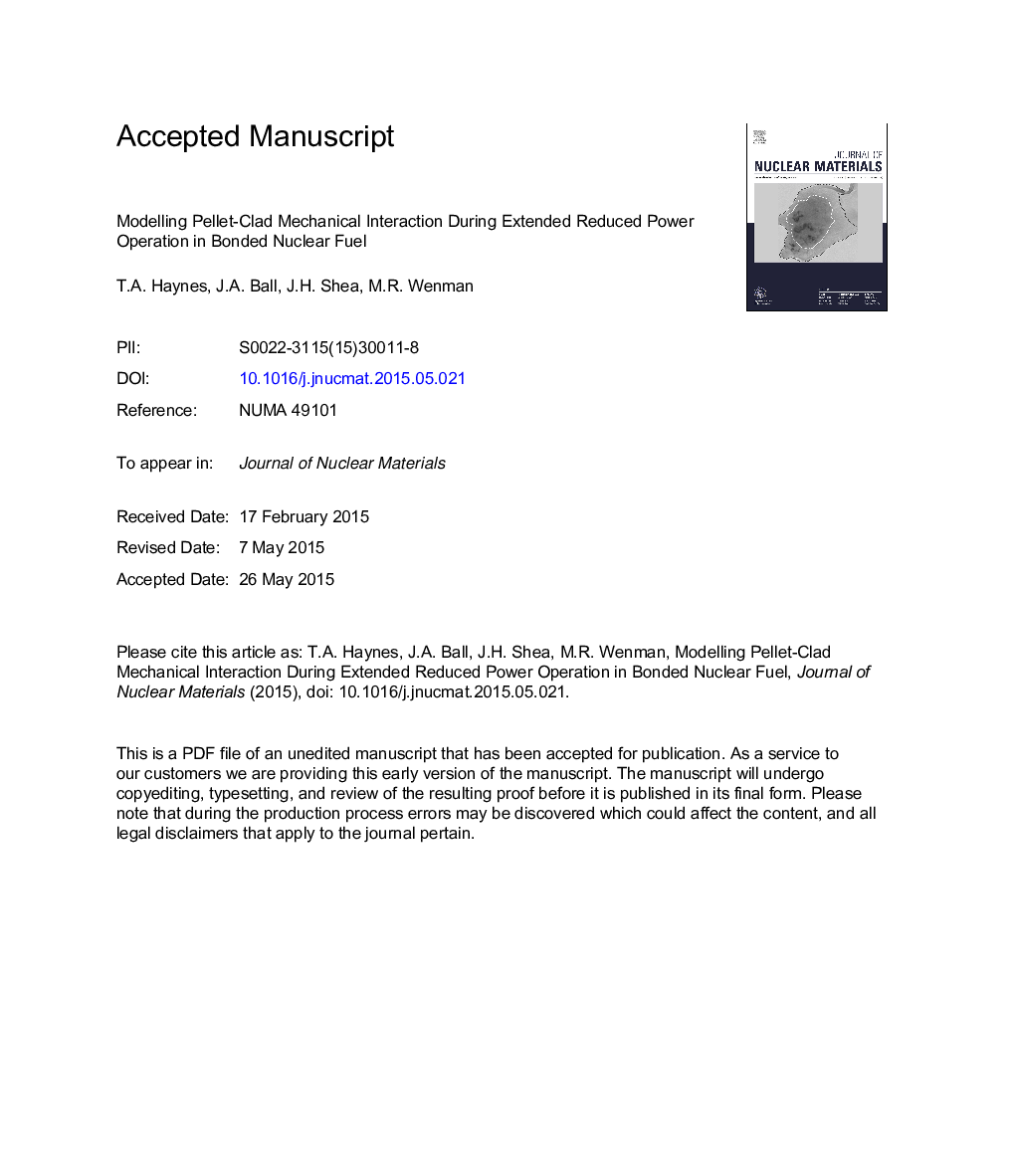| Article ID | Journal | Published Year | Pages | File Type |
|---|---|---|---|---|
| 7965265 | Journal of Nuclear Materials | 2015 | 37 Pages |
Abstract
A 2D-rӨ model of pellet-clad mechanical interaction in advanced gas-cooled reactor fuel is presented. An incipient 5 μm crack is introduced into the inner surface of cladding bonded to a detachable sliver of fuel. Micro-cracking in the sliver is accounted for through a reduced elastic modulus. A test transient consisting of a hold at 70% power for 720 h was applied to the model. The competing effects of the closure of pellet cracks due to irradiation creep in inner regions of the pellet during extended low power operation, and that of thermal creep in the cladding whilst at reduced power alleviating this are investigated. In colder elements, the effect of irradiation creep dominates. In hotter elements, the effect of cladding creep at low power dominates. It was found that adjusting factors related to the pellet shape were unimportant; the sliver thickness, sliver shape and initial pellet crack width had only a small effect upon the extent of PCMI. Adjusting factors relating to the shape of the incipient crack such as the crack radius and depth had a significant effect; as did adjusting the elastic modulus reduction factor accounting for ladder cracking in the sliver and the coefficient of friction used throughout the model. The resulting model was able to predict the trend in average clad bore crack depth with axial position in the core observed in post irradiation examination.
Related Topics
Physical Sciences and Engineering
Energy
Nuclear Energy and Engineering
Authors
T.A. Haynes, J.A. Ball, J.H. Shea, M.R. Wenman,
